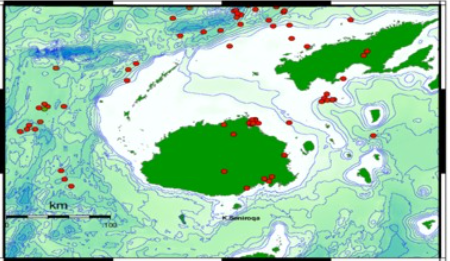THE possibility of a major earthquake hitting Fiji should not be taken lightly by residents, as it is difficult to predict when and where one might occur.
This is the advice from the Mineral Resources Department (MRD), which said Fiji was located in a tectonically active region where earthquakes were a natural occurrence.
“Earthquakes cannot be forecasted or predicted in advance; they can only be detected and confirmed after they have occurred,” the MRD said.
“Thus, the public should be aware that earthquakes do happen, it is a natural occurrence.
“The possibility of a major one occurring should not be beyond us, but for us to take note, to prepare, remain vigilant, and ready to respond as and when it occurs.”
The MRD said the Asia-Pacific region was a seismically active area, primarily because of its position along the Pacific Ring of Fire.
The department described this as a horseshoe-shaped zone of intense seismic and volcanic activity encircling the Pacific Ocean.
“This region is characterised by the movement of multiple tectonic plates, including the Pacific, Indo-Australian, Philippine Sea, and Eurasian plates, which frequently interact through subduction, collision, and faulting processes.
“As a result, large earthquakes are a common occurrence, often striking countries along this belt, including Japan, Indonesia, the Philippines, Papua New Guinea, Vanuatu, Tonga, New Zealand, and neighbouring Pacific Island countries.
“The recent magnitude 7.0 earthquake in Tonga and the Myanmar earthquake are part of this ongoing tectonic process, where stresses build up along plate boundaries and are eventually released as seismic energy.”
In addition, the MRD said its Seismology Unit actively conducted public awareness campaigns to educate communities on earthquake and tsunami preparedness.
This included school visits, community outreach programs and participation in disaster preparedness drills, which occurred in collaboration with the National Disaster Management Office (NDMO), NGOs and other key agencies.
“Recently, we implemented the Tsunami Ready Program with NGOs and UNESCO at Cuvu District, Nadroga.
“This program prepares the community on how they should respond to tsunami alert messages. This includes mapping their evacuation routes and tsunami safety zones.
“The goal is to ensure that the public is informed about the necessary safety measures before, during, and after an earthquake or tsunami.”



